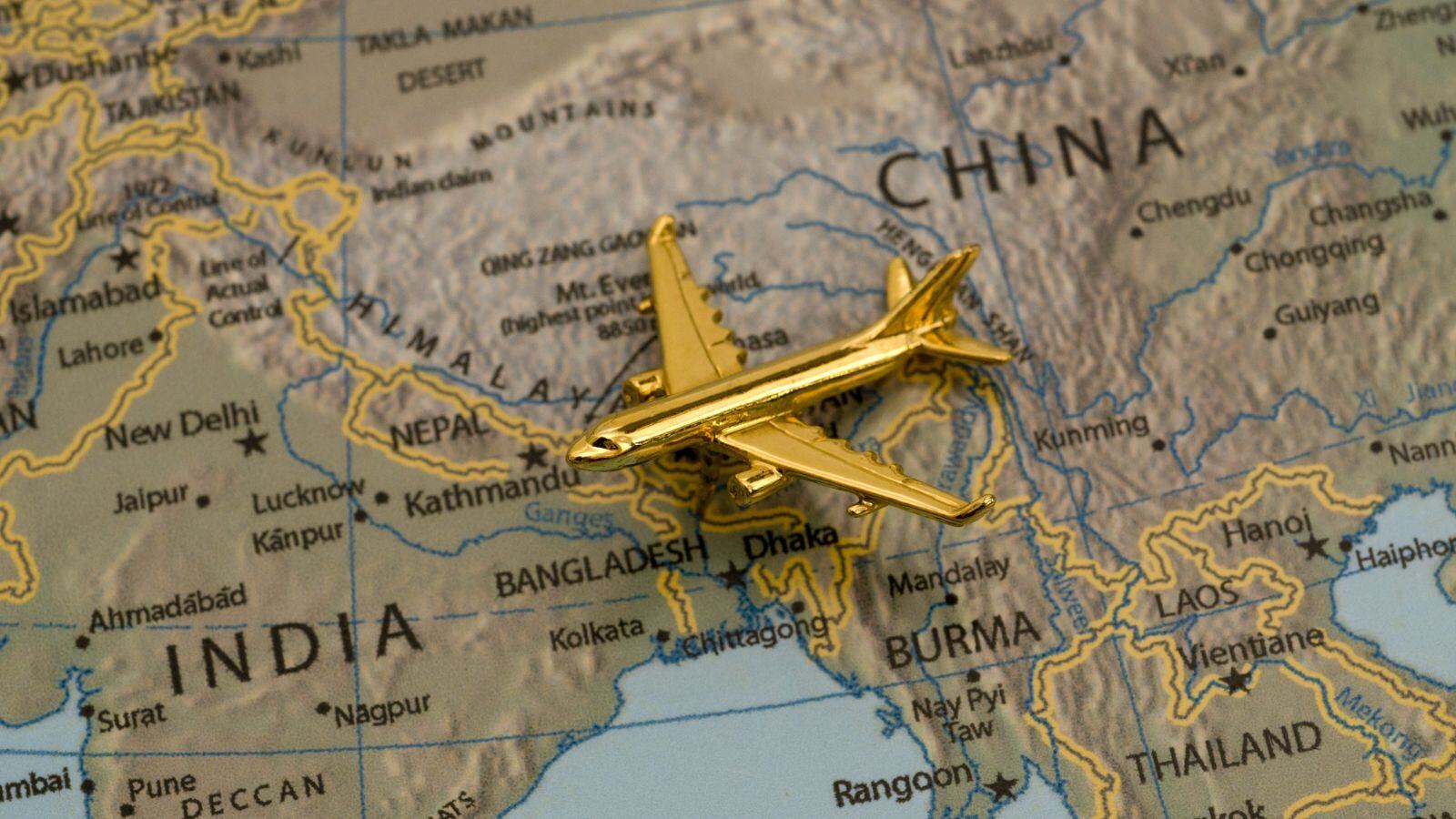China and India have recently begun discussions on restarting direct air services between the two countries.
These services have been on hold since 2020 due to a combination of the pandemic and a series of border incidents. It might be coincidence that talks are being held now, or a mutually convenient development for both parties. The opportunities for services between two of the largest aviation markets in the world are obvious, but it raises the question of how any new arrangement will differ from 2020 when Chinese airlines dominated the market.
A Historically Regulated Market
Historically, China and India have had some of the most restrictive air service agreements. However, in recent years, both countries have been relaxing their attitudes because of commercial necessity. Nevertheless, it would be fair to say that the potential of such a market relative to the levels of frequency operated have never been fully recognised.
Peaking in 2019 there were some 2,588 scheduled flights a year between the two countries: averaging seven one-way flights a day. Delhi was the focal point for services from Shanghai and Guangzhou with China Southern and Eastern the two dominant airlines operating two daily flights between the countries.
Chinese airlines dominated the market, in part because of the historic “five and twenty” rule of the Indian authorities that essentially prevented any airline aside from Air India operation; who unfortunately for many years had been struggling to survive yet alone capitalise on new emergent market opportunities such as China offered. With Indian airlines essentially restricted in their market access by their own government policy, India provided opportunities for China’s airlines to dominate holding some 80% share of all flights operated - until, of course, the pandemic and a political dispute.
A New Aero Political World
Fast forward five years and with no direct services between the two countries demand has continued to grow with 572,000 indirect passengers travelling through alternate hub airports such as Hong Kong, Bangkok and even Singapore, to reach their final destinations. And while that volume of indirect passengers may seem large, in 2019 (pre-pandemic) over 1.2 million travelled indirectly, confirming there is certainly a market between the two countries. All of which makes a political reset of relationships seem worthwhile for a host of reasons.
With China–US air travel at a historic low, the probability of Chinese airlines returning to the US market in the next four years, under the current administration, appears limited. In 2019, China’s airlines operated some 10,400 flights between the two countries, this year just 2,500 are scheduled under the current bilateral agreement; a steep 76% decline and for Chinese airlines a loss of access to some major hard currency market opportunities. Shifting focus closer to home on high-growth markets like India is a strategic move—even before factoring in current trade-related challenges.
For India - and the aspiration to create world class hub airports in Delhi and Mumbai - access to China is a crucial part of the development strategy and something that could not be ignored, especially when the country’s airlines have 1,800 aircraft on order over the next twenty years; they may not all get delivered and replacements are in that number but they have to have markets to serve! With IndiGo flexing their muscles in longer haul international markets and a rebranded Air India looking to expand their network China presents numerous opportunities and China’s airlines may have a harder fight for dominance in a world where a true low-cost airline is competing head-to-head, especially in the local Indian market.
Advancements in aircraft technology are also a factor from the Indian airlines' perspectives and while Chinese carriers may elect to use wide-bodied aircraft on any new services, for IndiGo the A321XLR’s will provide a very efficient aircraft for such a market. Indeed, from a timing perspective with IndiGo now receiving a more regular supply of new aircraft and over the worst of their Pratt & Whitney engine issues a new rich and underserved market is too good an opportunity to miss.
Getting Ready to Fly
While we are only at the early stages of negotiations, both the Chinese and Indian authorities would benefit from being able to show that outside of other geo-political developments there are alternative and potentially larger opportunities available. And these can be developed without having to return to historic markets for revenues. None of which will concern some of those lost market opportunities but once again shows how in adversity there is always an opportunity!
Looking for more aviation insights? Take a look at our 3-part Indian Aviation series here.





